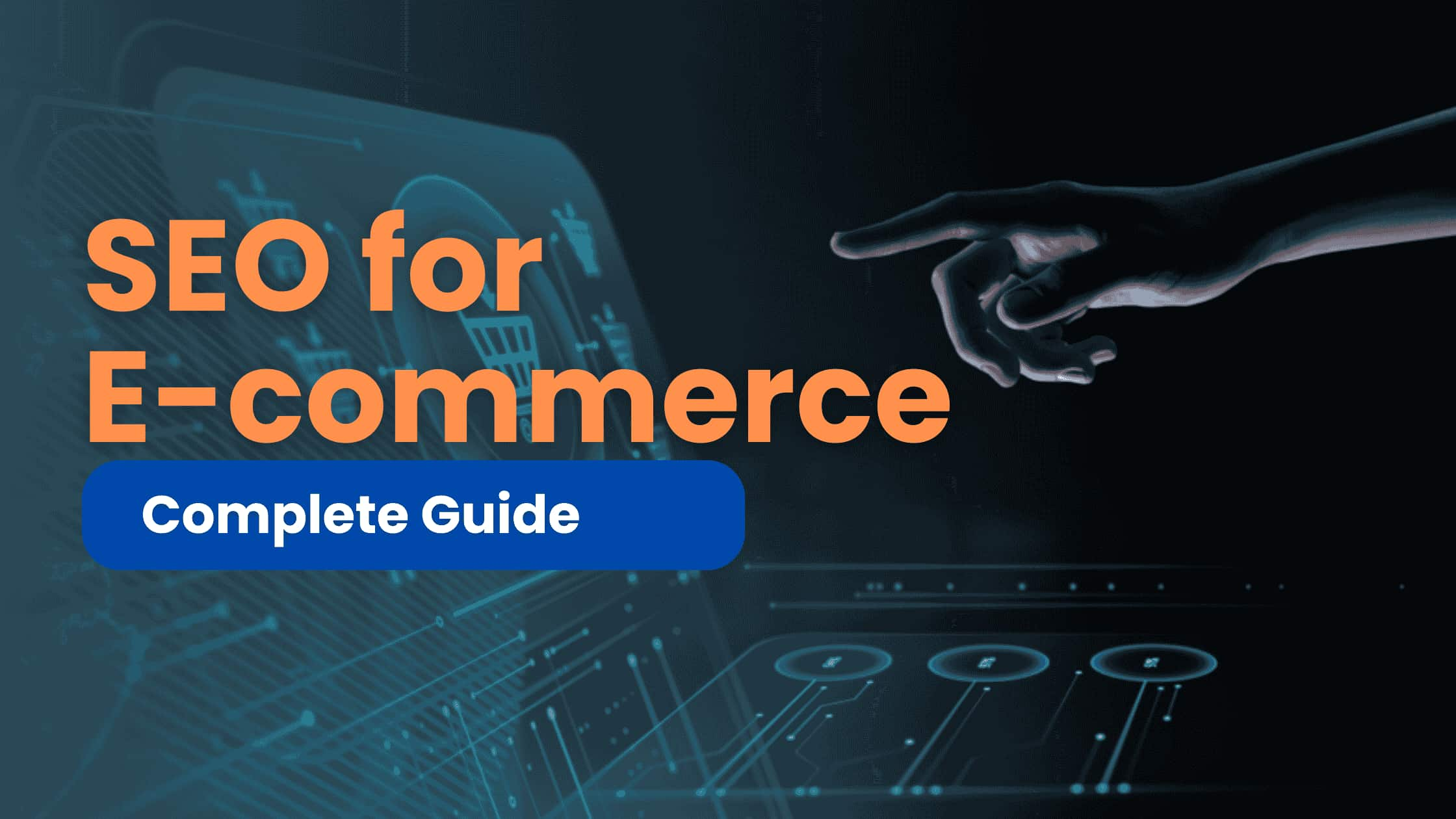In today’s competitive online marketplace, mastering ecommerce SEO is crucial for any business looking to drive traffic, increase visibility, and boost sales. This comprehensive guide will walk you through the essentials of SEO for e-commerce websites, ensuring your online store ranks higher in search results and delivers a seamless shopping experience for your customers.
What is SEO for E-Commerce?
SEO for e-commerce is the process of optimizing online stores to rank higher on search engines. Unlike general websites, e-commerce platforms require unique strategies to ensure product pages, categories, and content perform well in search results. By implementing effective SEO techniques, businesses can attract relevant traffic, enhance user experience, and increase sales. Key aspects include optimizing product descriptions, improving site speed, and building high-quality backlinks.
Why Does SEO Matter for E-Commerce?
SEO is the backbone of any successful e-commerce business. Here’s why it matters:
- Organic Traffic Drives Sales: Most online shoppers start their journey with a search engine. SEO ensures your store appears where customers are searching.
- Cost-Effective Growth: Compared to paid advertising, SEO is a long-term investment that continues to deliver results.
- Improved User Experience: Optimizing your site for SEO enhances its speed, navigation, and usability, which benefits users and search engines alike.
- Brand Credibility and Trust: Higher search rankings build trust with consumers, positioning your brand as an industry leader.
E-Commerce SEO Best Practices
Follow these best practices to enhance your site’s visibility and performance:
Keyword Research for E-commerce SEO
Keyword research is the foundation of any successful SEO strategy. Use tools like Google Keyword Planner, SEMrush, or Ahrefs to identify search terms your target audience uses. Focus on:
- Primary Keywords: Broad, high-volume terms like “ecommerce SEO.”
- Long-Tail Keywords: Specific phrases like “best running shoes for women.”
- Product-Specific Keywords: Phrases that describe your products in detail. Incorporate these keywords naturally into your product pages, meta descriptions, and content.
Optimized Product Pages for SEO
Your product pages should be detailed and user-friendly. Include:
- Unique Descriptions: Avoid duplicate content by writing original descriptions for each product.
- High-Quality Images: Use optimized images with descriptive alt text.
- Call-to-Action (CTA): Encourage users to make a purchase with compelling CTAs.
- Customer Reviews: Showcase user reviews to build trust and enhance SEO.
Mobile Optimization
With mobile users making up a significant portion of online shoppers, a mobile-friendly website is essential. Ensure:
- Your site is responsive and adapts to any screen size.
- Navigation is intuitive with easy-to-tap buttons and simplified menus.
- Pages load quickly to prevent users from bouncing.
Improve Site Speed
Site speed is a critical ranking factor. Improve performance by:
- Compressing Images: Use tools like TinyPNG to reduce image file sizes.
- Caching: Enable browser caching to speed up repeat visits.
- Minimizing Scripts: Reduce the number of JavaScript and CSS files.
- Using a CDN: Distribute your site’s content across multiple servers for faster loading.
Technical SEO
Technical SEO ensures your site is easily crawlable by search engines. Best practices include:
- Fixing Broken Links: Repair or redirect dead links to prevent 404 errors.
- Using HTTPS: Secure your site with HTTPS to protect user data and boost rankings.
- XML Sitemaps: Submit sitemaps to search engines to improve indexing.
- Canonical Tags: Prevent duplicate content issues with proper canonicalization.
Content Marketing
High-quality content attracts and engages your audience while improving SEO. Implement:
- Blog Posts: Write articles on topics relevant to your products and industry.
- How-To Guides: Provide useful, actionable advice to your customers.
- Videos: Create product demos and tutorials to keep users engaged.
- FAQs: Address common customer questions to improve user experience and rankings.
User-Generated Content
Encourage customers to contribute content such as:
- Reviews and Ratings: Highlight product reviews to build credibility and trust.
- Photos and Videos: Share user-generated media to enhance authenticity.
- Q&A Sections: Allow users to ask questions and provide answers directly on product pages. This content not only enhances trust but also adds valuable keywords to your site.
Monitor Competitor Strategies
Stay ahead by analyzing your competitors’ SEO tactics. Look for:
- Keywords They Rank For: Identify high-performing keywords your competitors are targeting.
- Content Gaps: Find topics they haven’t covered and create content to fill the void.
- Backlink Profiles: Use tools like Ahrefs to discover where they’re earning backlinks and replicate their strategy. By learning from your competition, you can refine your approach and identify new opportunities.
How to Create an Ecommerce SEO Strategy
Developing a robust SEO strategy involves several key steps:
- Audit Your Current Website:
- Use tools like Screaming Frog to identify technical issues.
- Analyze current traffic and rankings with Google Analytics.
- Define Goals:
- Set clear, measurable objectives such as increasing organic traffic or boosting sales.
- Competitor Analysis:
- Study successful competitors to identify gaps and opportunities.
- Keyword Research:
- Identify keywords that align with your products and audience intent.
- Optimize Your Website:
- Ensure proper site structure, fast load times, and mobile compatibility.
- Content Creation:
- Develop a content calendar for regular, high-quality content.
- Focus on evergreen topics that will remain relevant over time.
- Link Building:
- Earn backlinks from reputable websites and blogs in your niche.
- Utilize guest blogging and influencer collaborations.
- Track and Adjust:
- Continuously monitor performance and refine strategies based on analytics.
11 Tips for Successful SEO in E-Commerce
- Focus on User Intent: Understand what your audience is looking for and create content that meets their needs.
- Optimize for Mobile: Ensure your site is responsive and fast on all devices.
- Use High-Quality Images: Include descriptive alt text for every image.
- Optimize Page Load Speed: Compress images and minimize scripts to reduce load times.
- Leverage Social Proof: Encourage reviews and testimonials to build trust.
- Utilize Schema Markup: Add structured data to improve search visibility.
- Conduct Regular Audits: Identify and fix technical SEO issues.
- Create Engaging Meta Descriptions: Write compelling summaries to improve click-through rates.
- Build Backlinks: Focus on earning high-quality links from reputable sources.
- Enhance Internal Linking: Connect related pages to improve navigation and SEO.
- Monitor Analytics: Use tools like Google Analytics to track performance and refine your approach.
Advanced Strategies for E-Commerce SEO
Voice Search Optimization
- Focus on conversational keywords and phrases.
- Answer common questions directly in your content.
Local SEO for E-Commerce
- Optimize your Google My Business profile for local visibility.
- Use location-specific keywords in your content and metadata.
Personalization
- Use dynamic content to tailor user experiences.
- Implement AI tools to recommend products based on browsing history.
Video Content
- Create product demonstration videos and optimize them with relevant keywords.
- Host videos on YouTube and embed them on your site for added visibility.
Conclusion
Investing in ecommerce SEO is not just about improving rankings—it’s about creating a seamless and engaging experience for your customers. By implementing the strategies outlined in this guide, you can attract more traffic, build trust, and grow your sales sustainably.
Whether you’re just starting out or looking to refine your strategy, SEO remains a cornerstone of success in e-commerce. Staying consistent, adapting to new trends, and maintaining a customer-first approach will ensure long-term success.
For professional help, connect with RSXigital to build a fully optimized e-commerce website that meets your SEO and business goals. Let the experts guide you to achieve maximum visibility and growth in today’s competitive market.
FAQ: Common Questions About E-Commerce SEO
1. What is e-commerce SEO?
E-commerce SEO is the process of optimizing your online store to rank higher in search engine results, driving organic traffic and sales.
2. Why is SEO important for e-commerce?
SEO improves your website’s visibility, attracts targeted traffic, enhances user experience, and helps establish your brand’s credibility.
3. How long does it take to see results from e-commerce SEO?
SEO results typically take 3-6 months to show significant improvements, depending on competition and the effectiveness of your strategies.
4. What are long-tail keywords, and why are they important?
Long-tail keywords are specific phrases with lower search volumes but higher conversion potential. They attract highly targeted traffic.
5. How can I optimize product descriptions for SEO?
Use unique, keyword-rich descriptions that highlight your product’s features and benefits. Include relevant keywords naturally without stuffing.
6. What role does mobile optimization play in SEO?
Mobile optimization ensures your website is user-friendly on smartphones and tablets, a critical factor as mobile traffic continues to grow.
7. What is technical SEO, and why is it important?
Technical SEO focuses on the backend of your site, ensuring it is crawlable, fast, and secure. It’s essential for improving rankings and user experience.
8. How can user-generated content improve SEO?
Reviews, ratings, and Q&A sections add fresh, keyword-rich content to your site, boosting relevance and engagement.
9. Do backlinks matter for e-commerce SEO?
Yes, high-quality backlinks improve your site’s authority and help it rank higher in search engine results.
10. What tools are best for e-commerce SEO?
Popular tools include Google Analytics, SEMrush, Ahrefs, Moz, and Screaming Frog for tracking performance and identifying optimization opportunities.




